Mention Boulder Amplifiers to almost any audiophile and the resulting comments will almost certainly be much the same. These opinions may include world-class performance, impeccable quality, best of the best, big, heavy and, of course, very expensive. None of these descriptions would be entirely wrong. One need look little beyond the Boulder Series 3000 components for ideal examples of the big-dollar audiophile electronics for which Boulder is principally known.
In a somewhat antithetical position to these descriptions, and price points, comes the $5,900 Boulder 508 Phono Preamplifier. As the preponderance of the company’s product line goes, the Boulder 508 Phono Preamplifier is surprisingly competitively priced. It is also quite compact. Perhaps best of all, it is manufactured under the same discriminating standards as their most expensive equipment. From a design standpoint, it exudes simplicity. About the only question remaining is how it performs.
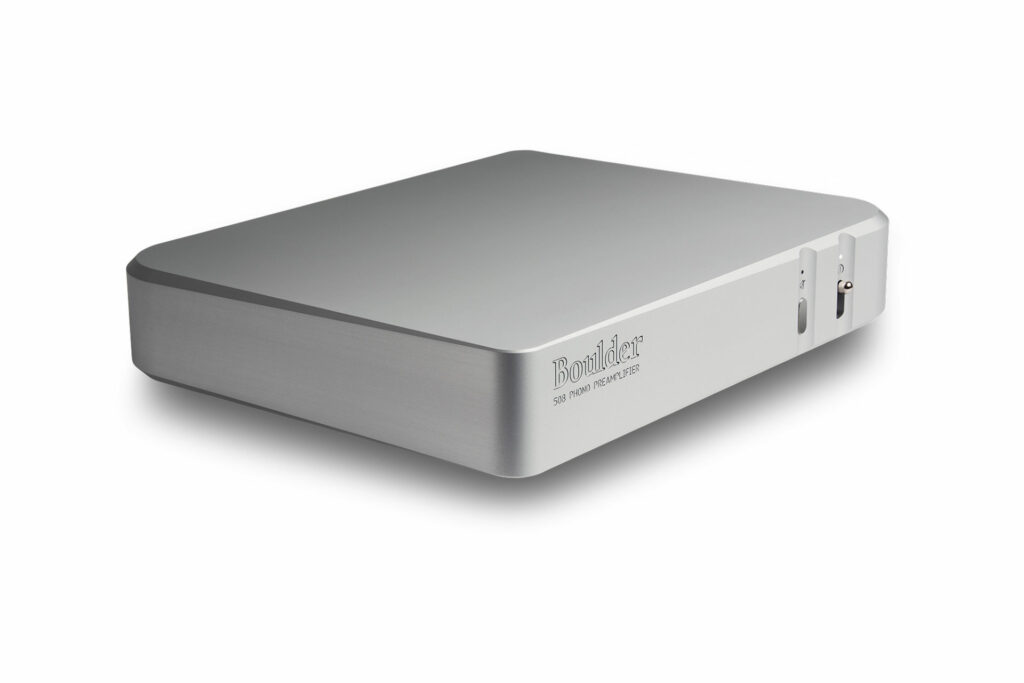
What Makes the Boulder 508 Phonostage So Special?
- Unlike most Boulder products, the 508 Phono Preamplifier is very much plug and play.There are very few user-defined settings available. In fact, the only user-selectable settings are front-mounted power and mute buttons and a rear-mounted toggle for Moving Magnet (MM) and Moving Coil (MC) cartridges.
- Like all Boulder gear, 6061 aluminum billet is CNC machined in Boulder’s Colorado facility. After machining, further processing consists of in-house bead blasting, sanding, anodizing (done by an outside vendor due to the caustic nature and EPA monitoring of dip tanks used in anodizing), and finishing, which deliver a heavy-walled, rigid structure to house the internal circuitry. Once the electronics have been installed, the unit is packaged and boxed for shipment. While most audiophile gear isn’t easily made here, the Boulder 6061 is without question made in America.
- The circuit boards are all densely populated in a surface-mount topology. Boulder’s own pick and place machines alongside wave soldering performs circuit board assembly. Boulder claims this densely populated design reduces excess capacitance, which ultimately leads to improved sonics. Building circuit boards in-house adds a level of quality oversight not easily obtained from outside vendors.
- The Boulder 508 Phono Preamplifier is fully balanced, input to output, using exclusively XLR terminals. There are no RCA (single ended) connections on the rear of the Boulder 508 Phono Preamplifier.
- There is a noticeable lack of user-selectable gain and load settings. This eliminates the uncertainty of fussing with settings to achieve the optimal level of sonics. For Moving Magnet (MM) cartridges, gain is standardized at 44 dB and input impedance is 47K ohms. For Moving Coil (MC) cartridges, gain is preset at 70 dB and impedance fixed at a value of 100 ohms.
- The power supply is mounted in its own discrete internal compartment to assure the prevention of hum or noise bleeding into the audio circuit. Because of the highly efficient design of the power supply, Boulder claims the unit may be left powered on full time to eliminate any potential warm-up issues or connectivity/control complications.
- In an effort to minimize distortion from warped records, Boulder includes an integrated low-cut filter to remove excessive low frequencies that would result in diminished sonics.
- The overall size of the Boulder 508 Phono Preamplifier is pretty compact. Despite a generally smaller physical size than most Boulder products, the 508 Phono Preamplifier is still sufficiently heavy to feel substantial. This is a component of a size that allows placement in almost any audio rack or area where stereo gear will be housed.
Why Should You Care About the Boulder 508 Phono Preamplifier?
Well, one answer is obvious – the reputation of far more expensive Boulder products carries over into an affordably-priced yet high-performance phonostage. Like all Boulder equipment, the design is excellent and dedicated to one unified task: delivering superlative playback of an analog LP. Based on price and physical size relative to performance, this phonostage is not only affordable, very much so compared to a typical Boulder product, but it benefits from Boulder’s overall design and manufacturing ethos. For an audio system with a moderately-priced analog section, the Boulder 508 Phono Preamplifier will be a welcome addition for years of trouble-free enjoyable sonics.
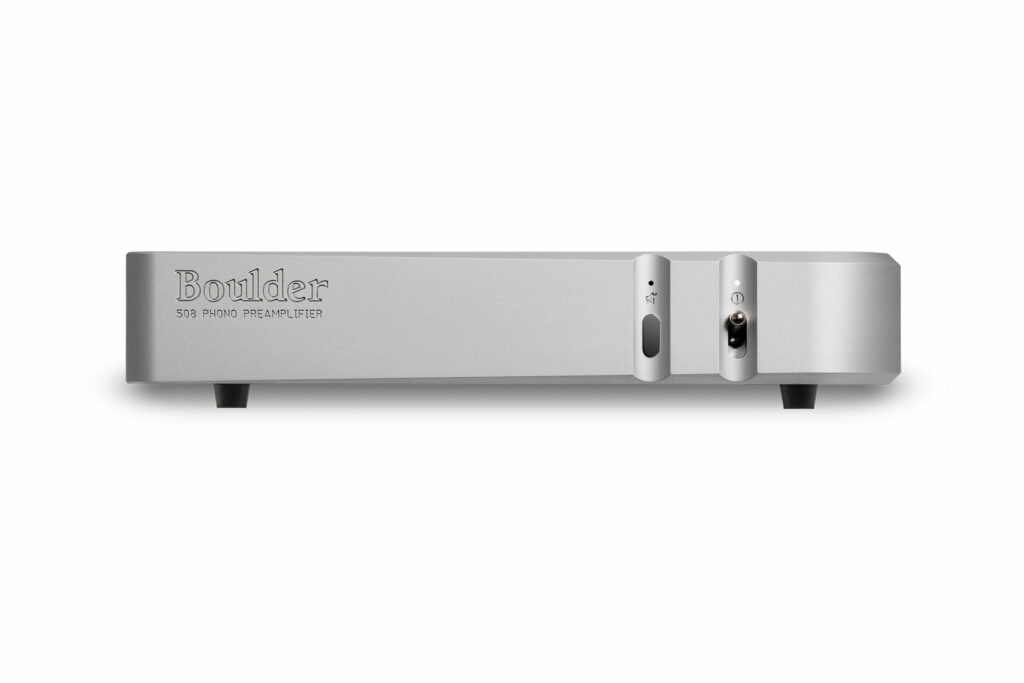
Some Things You May Not Like About the Boulder 508 Phono Preamplifier …
- There are no RCA connections for connecting a tonearm cable or connection to a preamp or integrated amp. In past reviews of Boulder products, I have mentioned they do not believe in unbalanced or single-ended (RCA) connections. This is not a position from which Boulder will deviate, regardless of component cost. All rear-mounted connections are balanced XLR. Boulder does include their own internally-designed handmade adaptor to convert an unbalanced connection to a balanced version. There is only one included pair, however. If RCA will be used for input and output, a second pair of adaptors will need to be procured from Boulder, or a different manufacturer, at additional cost. For this review, I did use the adaptors for the tonearm input. As my output to the preamp is XLR, I had no need for a second set of adaptors.
- There will almost certainly be those analog proponents who prefer to choose their own gain and impedance settings. This is not possible on the Boulder 508 Phono Preamplifier, as all settings for both MM and MC cartridges are predetermined.
- There is no remote. And to tell the truth, with so few user selections available anyway, a remote hardly seems necessary. However, we live in a remote-infused world and, for those who place value in complete autonomy, a remote may be missed.
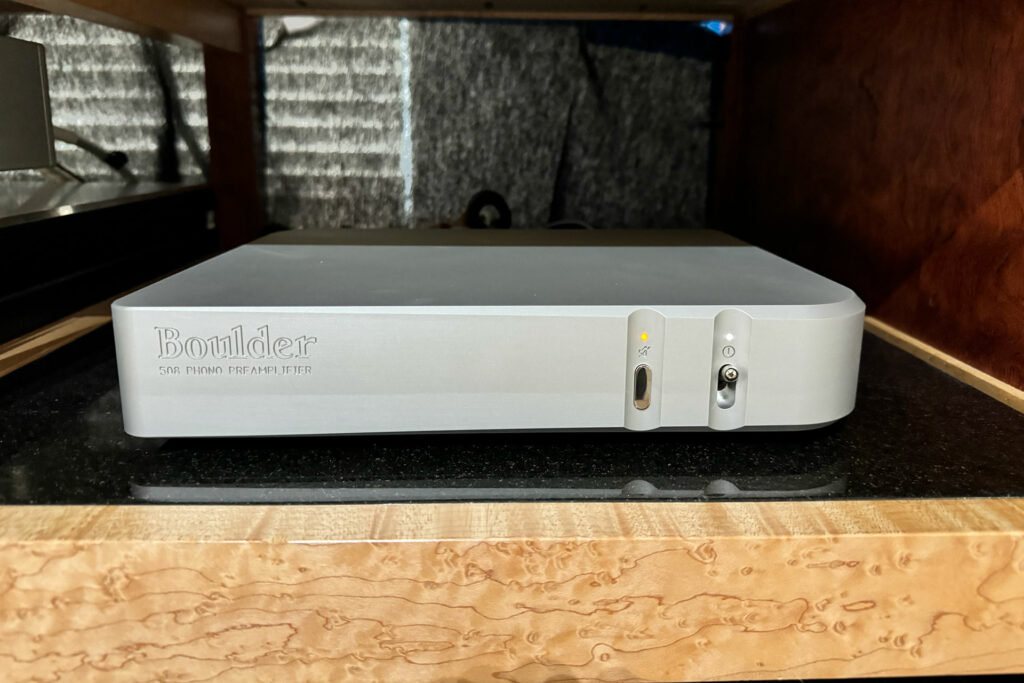
Listening with the Boulder 508 Phono Preamplifier …
My current reference cartridge is the Ortofon MC Verismo, the second from the top in the company’s best of the best Exclusive Series. Like all the other cartridges in this product group, the Verismo has a very low output voltage of 0.2 mV. My initial concern was that, with a fixed gain on the Boulder 508 Phono Preamplifier of 70 dB, I would need to up the volume on my T+A HV P 3100 preamp to unreasonable levels just to hear any music. My concern was only partially justified, as it was necessary to increase the preamp’s volume knob by 10 clicks to level match the 80 dB to 85 dB, which is my normal listening level. I was expecting to hear all manner of hum and background noise due to a perceived abnormally high-volume level on the stereo preamplifier.
My first record did not sound very impressive. Not to worry, I thought, as most components fresh out of the box need development time to sound their best. By the fifth LP, I had a big smile on my face. What I heard was glorious music. The amplitude had actually gained a little ground, the dynamics had vastly improved, the accuracy of acoustic instruments was spot on (so much so, one LP with an acoustic piano sounded like it was in the room with me), the imaging filled the entire area of image development and, best of all, when no music was playing – absolute silence. This came as a very big surprise, since I was expecting a significant rise in the signal to noise ratio (SNR) and all sorts of hum and unwanted noise because of the volume level on the preamp. I simply shook my head as the Boulder 508 Phono Preamplifier was one of the quietest phonostages I have ever heard in my system, irrespective of a higher-than-normal preamp volume level. It would seem Boulder’s idea of isolating the power supply was very shrewd.
If I had any issues with the sonics I had in my system with the Boulder 508 Phono Preamplifier, it would be relative to higher frequencies. I’d like to hear cymbal crashes and anything above say, 4000 Hz, voices or instruments, presented with a little more amplitude. My current phonostage, the very capable Pass Labs XP-27 (reviewed here) does not suffer in this area. Of course, it retails for $12,500, so it should perform very well. I cannot deny, however, for a $5,000 phono preamp, the Boulder 508 Phono Preamplifier is an absolute rock star.
Always one of my perennial favorites, the 1970 release of Cat Stevens’ Tea for the Tillerman contained one of his better-known hits, “Wild World.” This track is about the end of a relationship and, in Stevens’ case, the end of his involvement with then romantic interest Patti D’Arbanville. Stevens handles vocals and the acoustic guitar and, with the Boulder 508 in my system, the sounds of fingers on the fret board were easily heard. Stevens also plays a piano, which melds into the overall presentation with a high measure of ease and simplicity. The drums, while not overly dynamic, were also portrayed with sufficient power, speed and finesse to make them noticeable and caused my toes to start tapping. A double bass, congas and a tambourine rounded out the instruments on this popular track. The presentation was very clear, concise, and there was no congestion or distortion to mar the sonics. The Boulder 508 Phono Preamplifier made this track highly enjoyable by doing what it seems to do best, perform at a high level in spite of its more modest price.
In what for me remains the best driving the car windshield song ever created, I absolutely cranked up the Christopher Cross track “Ride Like the Wind” from his 1979 Grammy Award-winning self-titled album. This track is about a villain on the run to Mexico for some unknown crime – much the same way I felt on many past long windshield-time business trips. Each time I hear this song, I fight the urge to really crank it up. And even though my LP version is the original 1979 release, and has a few pops and clicks (it is, after all, 44 years old), I gave in to temptation and reached for the remote. With the clarity and low noise floor on the Boulder 508 Phono Preamplifier, I could have increased the amplitude until I could have no longer stayed in the room. As it was, I hit 100 dB or more easily and had a big smile on my face the whole time. This underscores what I really enjoyed about this phonostage. If you want a nice, polite, sitting on a park bench LP presentation, the Boulder 508 will serve you well. If you want to rock and roll and wake up the neighbors three houses down the street, it is unquestionably up for that as well. I could go on, but suffice to say the Boulder 508 Phono Preamplifier made this 44-year-old track come alive and made this reviewer feel like he was already halfway to Mexico.
Does the Boulder 508 Phono Preamplifier Have Any Resale Value?
Perhaps a more relevant question is: can you name a Boulder component that does not have solid resale value? Additionally, can you name a Boulder component not highly sought after on the used gear market? Boulder gear has a history of products selling used in an almost immediate timeframe. In fact, even finding Boulder gear not multiple decades old on the used market is a pretty heady challenge. Given the modest cost of the Boulder 508 Phono Preamplifier, a minimum of 50 percent of retail price is completely expected. Because of their stellar reputation of performance and build quality, all Boulder gear, including this phonostage, should have little problem selling used, and for a premium price as well.
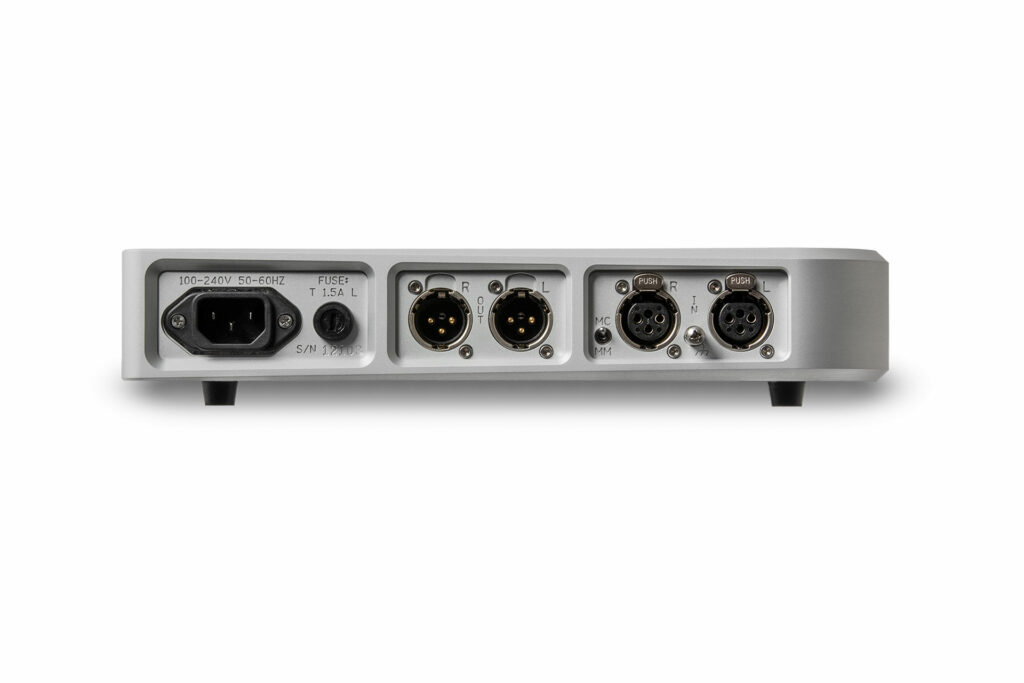
What is the Competition for the Boulder 508 Phono Preamplifier?
First to mind is the Mobile Fidelity (MoFi) Masterphono (reviewed here), designed by industry veteran Peter Madnick. Relative to low-output cartridges like mine, Madnick developed a Trans Impedance, Voltage Input connection for both XLR and RCA, which on my system completely eliminated any issues with output volume due to low-voltage cartridges. Masterphono is actually two separate enclosures in one box. One enclosure houses the power supply and the other houses the cartridge controls. Three large copper tubes pass between both enclosures, so that wiring may be routed. I found this phonostage to be exceptionally quiet and performed exceptionally well. At a retail cost of $5,995, it is slightly more expensive than the Boulder 508 Phono Preamplifier.
I also reviewed the Pass Labs XP-17 (reviewed here) and, at a slightly lower retail cost of $4,500, it too performed exceptionally well. Not surprising, as like all Pass Labs phonostages, it also had an exceptionally quiet background, and something not found on the Boulder 508, user selectable gain and load settings. Something else not commonly found on phonostages at this price level, the XP-17 also has three settings for capacitive load. I found this phonostage to be sonically excellent and, relative to retail price, was a component I could have easily made a permanent part of my system.
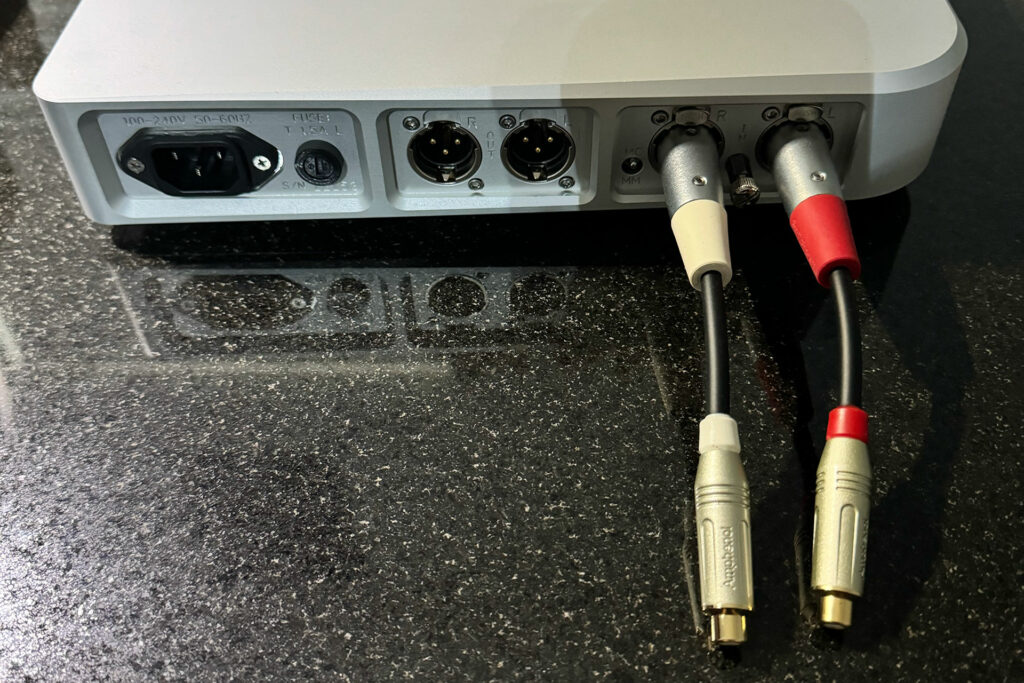
Final Thoughts on the Boulder 508 Phono Preamplifier
While this component is somewhat inconsistent with the average size and cost of Boulder’s remaining product line, it is no less the same level of an overachiever. This phonostage does credit to the sterling reputation the Colorado-based manufacturer has enjoyed almost since their inception. It is very well-designed, very well-built, performs at a very high level and, best of all, is very moderately priced. Given the retail price of $5,000, the Boulder 508 Phono Preamplifier is, for any system of commensurate cost, an outstanding value/performance choice for a phonostage.
In my system, it provided an exceptional rendering of LP excellence and a recreation of a high level of sonic quality. I expected a gain issue, due to the Boulder 508’s predetermined fixed output levels and no user adjustment. I also expected a significant level of hum, due to increasing the amplitude on the preamp necessary to compensate for the lack of gain. I expected the low output 0.2 mV cartridge to cause this phonostage to suffer a performance reduction. And, happily, not one of these things occurred. In fact, quite the opposite. What I discovered instead was, on album after album, sonic bliss. Clarity, accuracy and dynamics were consistent with any of the similarly-priced phonostages I have reviewed thus far. Imaging was equal to any phonostage I have had in my system, regardless of price. And the remarkable level of silence and very low SNR was, to coin a phrase – deafening …
It should not come as a surprise when I can highly recommend the Boulder 508 Phono Preamplifier. It has and does it all: competitive price for such a high-end component, excellent sonics, fabulous build quality and the pervasive consistency of quality and performance of all Boulder products. Anyone looking for a phonostage anywhere near this price class should audition this phonostage. I mean, after all, the Boulder name pretty much tells one everything one needs to know.




For the price it should have more than one input.